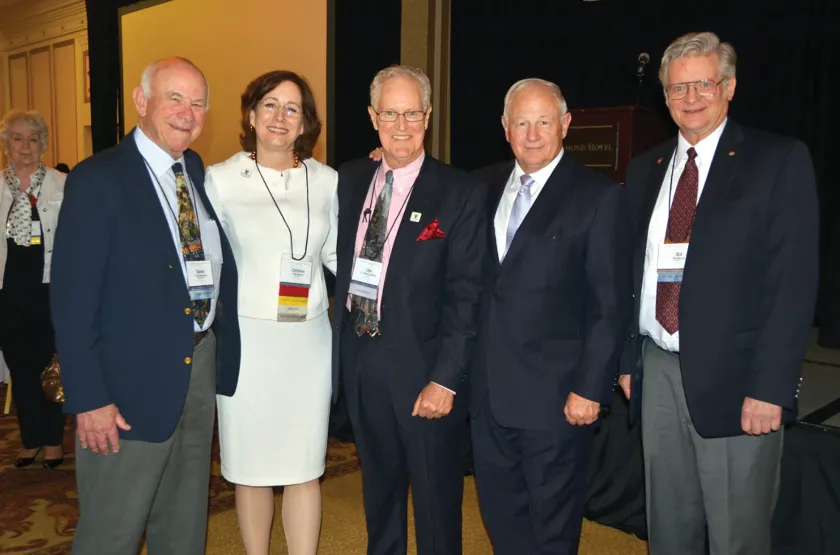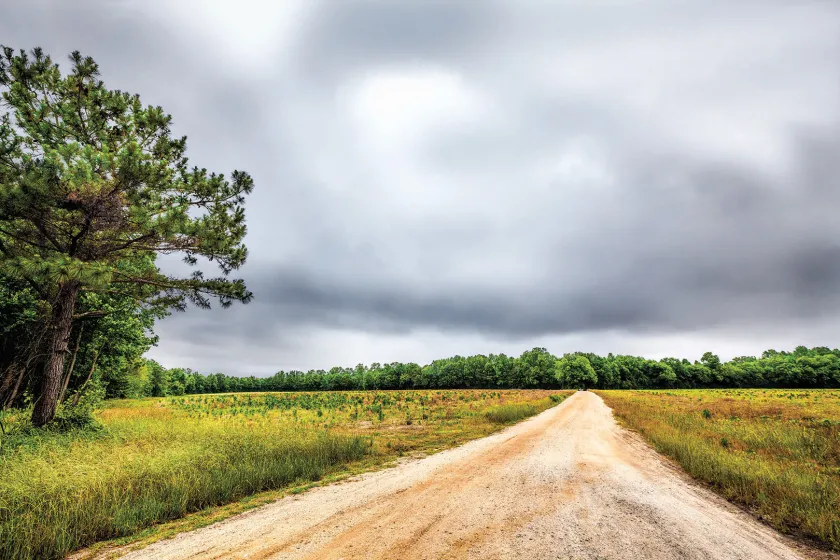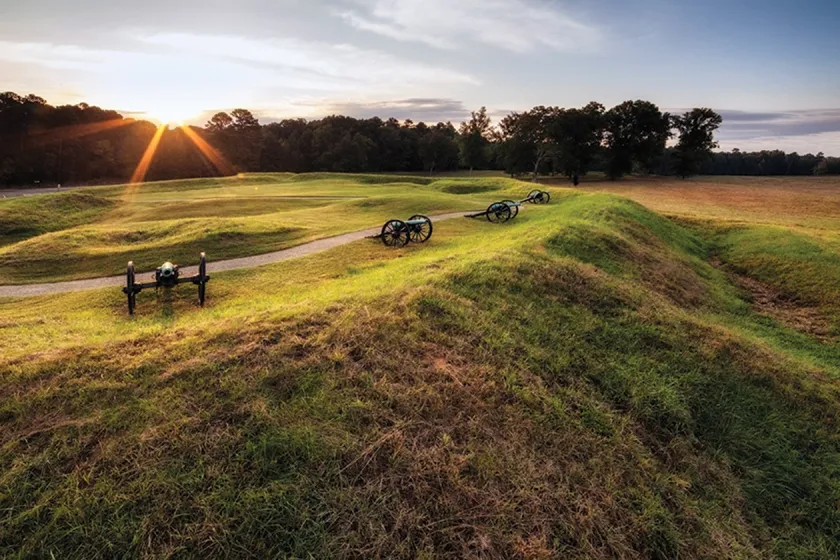Three Decades in the Trenches of Battlefield Preservation

Adapted from the foreword to Fighting the Second Civil War: A History of Battlefield Preservation and the Emergence of the Civil War Trust.
Thirty years ago, a Civil War academic scholar, five National Park Service battlefield historians and two Civil War buffs convened a meeting in a Fredericksburg restaurant to create an organization whose sole mission would be to buy and preserve the war's battlefields.
The Chantilly Battlefield in Fairfax County, Virginia, had been all but overrun by development. The growth-minded county had turned a blind eye to its own history- a heritage it had lavishly honored just 20 years earlier during the war's centennial.
As they created the Association for the Preservation of Civil War Sites (APCWS), the 27 people who attended that first meeting knew all too well that the National Park Service battlefield parks, as well as state and local parks, as fine as they were, did not include the vast majority of battlefield acreage on which young American men by the thousands had fought and died for the causes in which they believed.
West of Fredericksburg, most of the Chancellorsville Battlefield, including the field of Stonewall Jackson's legendary flank attack, remained privately owned and in imminent threat of development. The battlefield around Salem Church had already been lost. The story was the same at every significant battlefield of the Civil War. Some were more threatened than others, but most of America's hallowed ground was not preserved.
Before the national movement was organized, there were the Jerry Russells and the Annie Snyders of the world, out there howling in the pre-movement wilderness. Local battlefield friends groups, supported by Civil War round tables and other heritage groups, took on the fights against developers.

The founders of APCWS, with little more than the spirit of volunteerism and a willingness to work, began chipping away at the mountain of preservation opportunities and challenges. APCWS had no money to start with, but the first three saves were donations, which underscored the need for the group's mission. People gave the land to keep it preserved.
Through tireless effort and with the support of thousands of Civil War buffs across the nation who joined the cause as APCWS members, these preservation pioneers began to build a record of success. By 1990, APCWS had saved more than 660 acres at eight different battlefields.
Interest in the Civil War soared that fall with the airing of The Civil War, a documentary miniseries by Ken Burns. In 1991, Congress created the Civil War Sites Advisory Commission to study and rank the battlefields, their condition and potential threats to them. The original Civil War Trust was created, as well as the National Park Service's American Battlefield Protection Program (ABPP).
For the next nine years, APCWS and the original Trust warily coexisted, sometimes working together but mostly at odds and sometimes at war. Both groups became saddled with financial problems. APCWS had begun buying battlefields on credit, and found itself smothered under more than $6 million in debt.
When I joined the board of the Civil War Trust in July 1994, it was obvious that the two groups needed to be one. It wasn't easy, but the Trust and APCWS finally merged in late 1999 into the Civil War Preservation Trust ( and now, once again, simply the American Battlefield Trust). I was asked to lead the new organization, and I eagerly accepted the opportunity. I saw it as a chance to make a real difference in the movement.
The two groups, despite the discord, have done a good job. In 12 years, they had saved more than 6,000 acres at almost 50 battlefields in 14 states, preserving hallowed ground from Gettysburg, Pennsylvania, to Glorita Pass, New Mexico.
My challenge, and the challenge I presented to my staff and our vast, loyal membership, was to transform good into great. Together, during the past 18 years, we have pushed ourselves and our organization to be the best we could be. In the ceaseless quest to improve, we have become better in all facets of our mission. We are better at evaluating and prioritizing battlefield acquisition opportunities. We are better at using easements to protect historic ground. We are better at working with local organizations and forging a strong partnership with the ABPP. We are better fighters when preservation efforts become battles. We are better lobbyists on Capitol Hill, better fundraisers, better at Civil War history and education and better custodians of our donor dollars.
I am proud of our sparkling reputation as an efficient, reliable and thrifty nonprofit organization, with seven straight years (and counting) of four-star ratings for accountability, integrity and sound fiscal management by Charity Navigator, the nation's leading charity evaluator. Only 2 percent of the more than 8,000 charities evaluated earn this distinction.

On the eve of the 30th anniversary of the founding of APCWS and the organized national battlefield preservation movement, we have more than 46,000 acres at 131 sites in 24 states. That is more than 67 square miles of land. And in 2014, we heeded the call to expand our mission to help preserve battlefields of the Revolutionary War and the War of 1812. We started a new organization, Campaign 1776, and have begun saving hallowed ground from the battlefields of those wars.
By many measures, we have gone from good to great. But our duty is to become greater still, to use our experience, dedication and passion to sharpen our skills in all aspects of our mission. The need calls for nothing less. As many as 200,000 acres of preserved core battlefield land are still privately owned and could be developed. Only about a third of major battlefields such as Chancellorsville, the Wilderness and Spotsylvania have been preserved. The Battle of Cedar Creek in Virginia covered 20,000 acres. We managed to save about 640 acres in more than a dozen acquisitions since 1996, spending more than $5.4 million. That leaves only 19,360 acres to go.
Our efforts have been uplifted time and again by our fabulous, generous members. Thousands of donors large and small rise to the call for nearly every campaign, and remind us how many care enough to reach into their accounts and give us money. Our Board of Trustees have not only donated millions of dollars, but also countless hours providing oversight and guidance, demanding accountability and making final decisions.

Most of our acquisitions and transactions — more than 550 in the first 30 years of the organized national battlefield preservation movement — have been team efforts. The list of organizations and agencies we have partnered with to save land would fill pages. The ABPP is a primary partner, overseeing the federal funds appropriated for battlefield preservation since 1998. Many states with battlefields have been strong partners as well. Regional groups such as the Central Virginia Battlefields Trust and local groups such as Franklin's Charge in Tennessee and the Save Historic Antietam Foundation in Maryland near West Virginia, to name but three, have done great work. As a national organization, however, our 30-year history fighting to preserve hallowed ground has been far from smooth. Politically and emotionally, it has been a Second Civil War, with new battles being fought over the same battlefields. We have engaged in exhausting, frustrating preservation fights that often last longer than the Civil War itself. And if we avoided fighting the developers, too often passions ran high and created friction among preservation allies.
But the real sacrifice came from those citizen soldiers, who by the tens of thousands sacrificed their lives and shed their blood on American soil in this great experiment of democratic government. Hand in hand with preserving their battlefields, it is their story we tell - one of the greatest ever shared.
We honor their memory best by preserving their battlefields and the history enshrined in the original landscapes, which show us how terrain influenced the deadly struggles, and allow us to see in our mind's eye what these battles must have been like. Preserved battlefields are the foundation of our growing education and history initiatives on the Internet, in classrooms and at the historic sites themselves.
Our mission is encased in the heritage of our country's most traumatic event, and how the Civil War redesigned our democracy and set the United States on the path to becoming a bastion of freedom and the greatest power in the world. Yet we are reminded frequently that ours is a fragile democratic republic that is only as strong as the competency of its citizens. To know history is crucial to good citizenship. Who are you? Where did you come from? What do you stand for? We can answer those questions with greater clarity when we preserve the places where the history was made.
The story of the American Battlefield Trust and the emergence of a national organized battlefield preservation movement is a story worth telling. I do not know of any heritage land preservation organization in the world as successful as the Trust. The amount of land saved, the amount of money spent, the number of members involved - no organization has accomplished what we have achieved.

Our story is full of dreamers, schemers and true believers - bulldozers tearing up battlefields at night; volunteers seeking donations by the dollar in glass jars at Civil War reenactments; victories grabbed from the jaws of defeat; miraculous saves and the heartbreak of losses, both heritage and personal.
As we begin the next 30 years, we have already entered an exciting new realm. We are reversing development. There a few things as satisfying as buying developed properties, razing or moving postwar structures and returning the battlefield land to its wartime appearance. We did this at Gettysburg, buying Lee's Headquarters and returning the stone house to its wartime setting. We have done it at Antietam. And we joined local preservationists in Franklin, Tennessee, who pioneered this strategy, buying lots house by house - including a pizza parlor or two - recovering part of a core battlefield from a city and creating a historic park.
I relive the best and worst moments of my life as I reflect on the narrative of our history. Together, despite the inevitable conflicts, we built something from nothing. It grew from the start and has kept growing. APCWS started saving land in 1988, and the organized movement has saved land each and every year since. In our quest to go from good to great, we developed a land preservation assembly line, and we developed successful new techniques in fundraising and innovative ways to present Civil War history.
In the spirit of that great truism that "a picture is worth 1,000 words," explore our collection of 30 images — including rare gems from the Trust archives — that tell the remarkable story of our efforts and achievements across the past 30 years. I am certain they will stir your memory and remind you of the role you personally have played in protecting America's hallowed ground.





